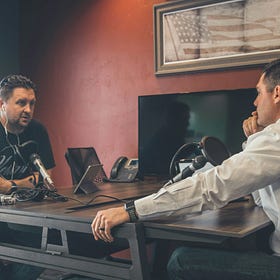The 6 Questions That Can Make You An Active Listener
The big difference between active listeners and passive listeners. Listening is not about absorbing informations, is about understanding.

Listening is a skill.
Like any other skill, you should train it. You should practice listening consistently in your daily life.
Passive listeners absorb information and make assumptions.
Being a passive listener means you don’t interact with the speaker. You receive information and assume the conversation is one-directional.
Three misconceptions are leading to this behavior.
Remaining silent makes us look smarter: this misconception comes from the idea that smart people understand everything without asking questions. Intelligent people don’t need clarifications and understand immediately.
Remaining silent to avoid making the speaker uncomfortable: we assume the speaker will think they weren’t clear enough if we ask a question.
Remaining silent to avoid asking stupid questions: this is probably the most common misconception. We are afraid to look stupid if we ask a stupid question.
All these three behaviors lead, in most situations, to misunderstandings.
The solution to misunderstanding is being an active listener.
Asking questions differentiates an active listener from a passive one.
Here are six questions you can ask to ensure you understand correctly without making the speaker uncomfortable.
1. Can you tell me more?
It is as easy as it looks.
Asking for more information is always a good idea. It also lets the speaker space to decide what to add to the conversation. Can the speaker add more context? Can they provide examples?
Let them decide what to add to the conversation.
2. What problem are we trying to solve?
You and the speaker are on the same team.
You both play to solve the same problem. Ensure the problem is clear to both of you. Writing it down is always a valid solution to ensure everyone is on the same page.
Helping the speaker clearly express the problem is crucial.
3. The story I made up is this … Is it correct?
Explain the concept in your own words and ask for validation.
When you think you understand the idea, try explaining it to the speaker. While we may think we know an idea clearly in our minds, it may not sound clear when we try to express it out loud. Once you describe it, ask the speaker to validate it.
If the speaker agrees with your explanation, you’re done; if not, reiterate and ask for clarifications.
4. Can you walk me through…?
Sometimes, giving a clear order to ideas can be very helpful.
For this reason, asking the speaker to order the steps can help you and them understand the proposed solution. Is the order of the steps clear? Ordering the steps can clarify gaps between one step and the following.
Let the speaker clarify the order of things and help them find possible weak spots in the process.
5. Can you help me understand this point?
Once you understand the big picture well, ask for clarifications around specific points.
Asking for help doesn’t imply that the speaker was unclear while explaining the concept. Using this simple word will avoid discomfort for both of you. Asking for clarifications on a specific point means you understand the idea and want to focus on an aspect of it.
Let the speaker help you understand also specific aspects of the concepts.
6. Can you tell me why are you passionate about it?
At some point, you and the speaker might disagree.
Respecting others’ opinions is essential. You should ask them to explain why they are passionate about an idea. This will let them know you care about their opinion and want to learn more about it.
Respect the fact that the speaker might have thought about it more than you.
Read Next
Preventing Burnout: How to Detect Early Warning Signs
The ICD-11 of the World Health Organization (WHO) describes occupational burnout as an occupational phenomenon resulting from chronic workplace stress that hasn't been successfully managed, with symptoms characterized by "feelings of energy depletion or exhaustion; increased mental distance from one’s job, or feelings of …
Mastering the Art of Facilitating Decision-Making as a Leader
We often think leaders have all the answers. This starts in childhood when we look at our parents as the people who can show and explain the world to us. Several kids reach the “why” phase, asking about everything. At that time, children see parents as people with all the answers.






